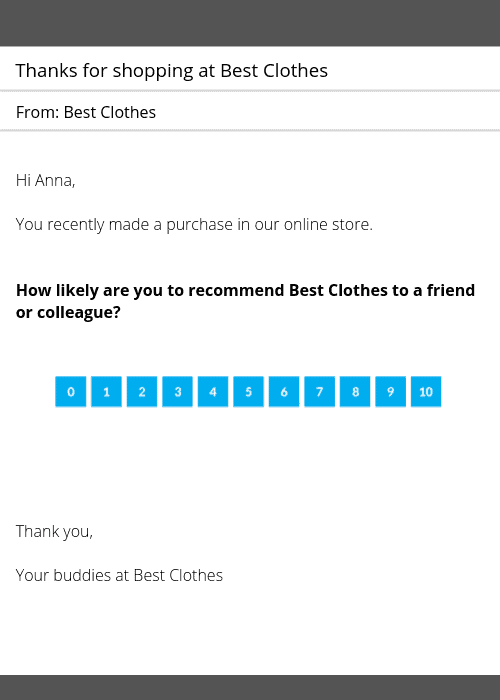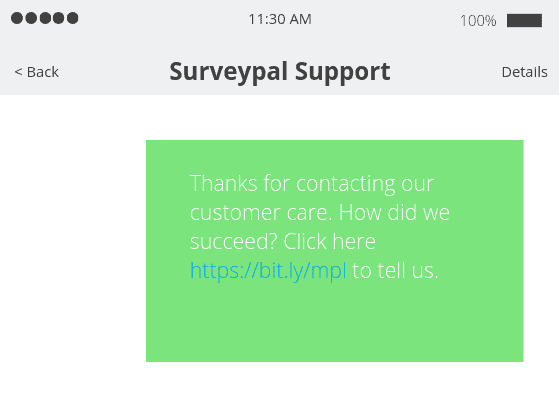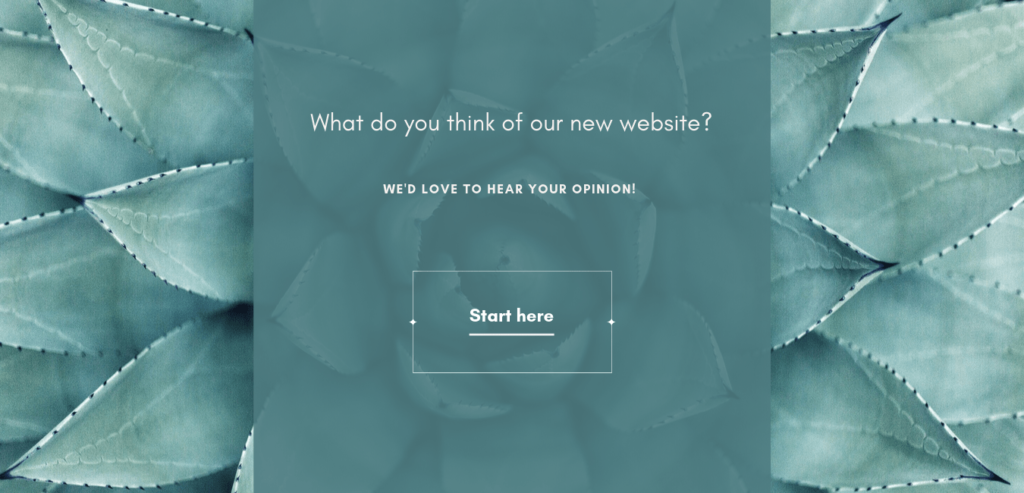Many customer experience professionals argue that a solid survey introduction is key when creating a survey. This holds true not only because a successful survey intro will engage your respondents but also because it will set the tone for what’s to come and it will result in increased response rates.
What’s a customer experience survey, anyway?
A customer experience survey is a set of questions designed to gauge customers’ sentiment towards an organization based on their experience at specific touchpoints. CX surveys are one of the most popular methods of capturing customer feedback and their ultimate purpose is to deliver actionable insights that can be used to improve the overall experience across the customer journey.
What is a survey introduction?
A survey introduction consists of a couple of sentences of descriptive text preceding the actual survey. The purpose of the intro is to attract attention and prompt people to respond to the questions. At the end of the day, the more responses you get the more accurate and reliable the data you end up with.
Do I have to introduce my CX survey?
For the most part, CX surveys are deployed in online channels. Research suggests that in the online world, people form a first impression in about 50 milliseconds – that’s faster than the blink of an eye! Your survey intro is your best chance to nail that first impression and hook your respondents. This means that not only do you need to add an introduction in your cx survey, you need to make it a good one too.
What are the components of a survey introduction?
If you go ahead and do a quick google search you will find an array of articles suggesting a good survey intro should include the following information:
- Who is conducting the survey?
- What is the purpose of the survey?
- How much time is required to complete the survey?
- Details about data privacy and/or anonymity
When it comes to traditional survey research, these are all valid points. If your goal, however, is to measure and monitor the customer experience you’re designing experience surveys, not conducting traditional survey research. Experience surveys are special. Let’s break down these elements through the prism of cx surveys, shall we?
Who’s deploying the survey?
When asking your own customers to provide feedback about their experience, let’s say during an interaction with your customer support, you must start with the assumption that they know who you are. There really is no need for you to go on and on about your company when introducing your survey. Your respondents know where it comes from because they already have a relationship with your organization.
What’s the purpose of the survey?
You can also rest assured that your customers understand what is the purpose of a cx survey. For example, statistics indicate that a staggering 90% of consumers believe that organizations ought to give them the opportunity to provide feedback about their experience during an interaction with customer service. This example is a clear indication that your clients expect you to put effort into measuring and improving their experience.
How much time will this take?
CX surveys are usually designed to be short. They are tools to realize an organization’s customer feedback strategy. It usually takes less than a minute to complete them because they are created to monitor the experience in a specific touchpoint. Simply put, you don’t need to waste time to tell your respondents how much time it will take to complete the survey because
- they have probably responded to a similar survey sent by you in the past and know how much of their time is required to do so
- because the main reason why people will not complete a survey is not because of its length but rather because they think that organizations will not implement change based on their feedback
Anonymity and data privacy
Data privacy is a hot topic right now and for good reason. Customer experience surveys, however, are primarily designed to capture feedback from your client base. Your clients should already be familiar with your privacy policy and how you handle their personal data.
Additionally, 81% of customers say that they would be more inclined to provide feedback if they knew they would receive a quick response. This should let you know that your customers want to be heard and engage with you. We would suggest that you provide your respondents with more information about your data privacy policy. Just don’t do it in the survey introduction. Redirect them to the right place from within the actual survey.
How to write a good survey introduction
Now we’ve established that customer experience surveys are not like all other surveys, we can dig into actual structure and writing tips.
Shift the focus on what matters
As we mentioned earlier, cx surveys are used to collect feedback based on touchpoint interactions. Shift the focus of your intro into that specific touchpoint. This approach will work wonders because your respondents will immediately be able to identify where the survey comes from, what is it about, and for what reason it was sent to them.
Language
Remember that you are asking actual human beings to reply to your survey. Keep the language clear and simple. Avoid industry terms or technical jargon. The best approach is to get straight to the point in a friendly and relatable manner.
Pro tip: Do not mention the word “survey” in your introduction.
Keep it short
It goes without saying that a long and complicated survey introduction will do you no favors. People are busy and will not give you the time of day if they are expected to read 4 paragraphs of text before even getting to the actual survey. Two to four sentences are enough to convey the right message and set the tone of the survey.
Say thank you
Keep in mind that the people who are replying to your survey are doing you a favor and not the other way around. Acknowledge that – say thank you and be humble. When people feel valued, they are more likely to give truthful responses.
Write your intro last
As a general rule, writing the survey introduction should be the last thing you do before sending out the survey. The intro functions as a summary of what’s to follow so it only makes sense to compose it after you have successfully planned and developed the content of your survey.
Survey introduction examples
Generally speaking, there are different channels through which you can deploy an online survey. Those channels include email invitations, text messages, websites, etc. Take those channels under consideration when creating an introduction.
If you are sending out email invitations to surveys, then the body of the email message is where your introduction should be.
When embedding a survey in your website then the first page of the survey should be where you add the intro.
Email invitation survey introduction
Most of us receive a large number of emails daily so you need to make sure the email invitation to your survey stands out. To achieve that, keep these three things in mind
- Email subject line
- Email body message
- Link to survey
Here is an example:

Pro tip 1: Embed the first question of your survey in the email. This will increase your chances of receiving completed survey responses.
Pro tip 2: Personalize the email invitation to the person receiving it by including their name or other relevant information.
SMS survey introduction
Surveys deployed via text message tend to have very high completion rates. Introduce your survey in a short and concise manner. Something like this will work wonders:

Website survey introduction
Embedding surveys on your site is a great way to reach a broader audience. These types of surveys allow you to be more creative with your introduction and customize the look and feel to fit with your brand message. Here is an example:

Did you like the post?
You might also like:

Surveypal
Everything you need to lead and improve your customer experience. Learn more at surveypal.com, or







